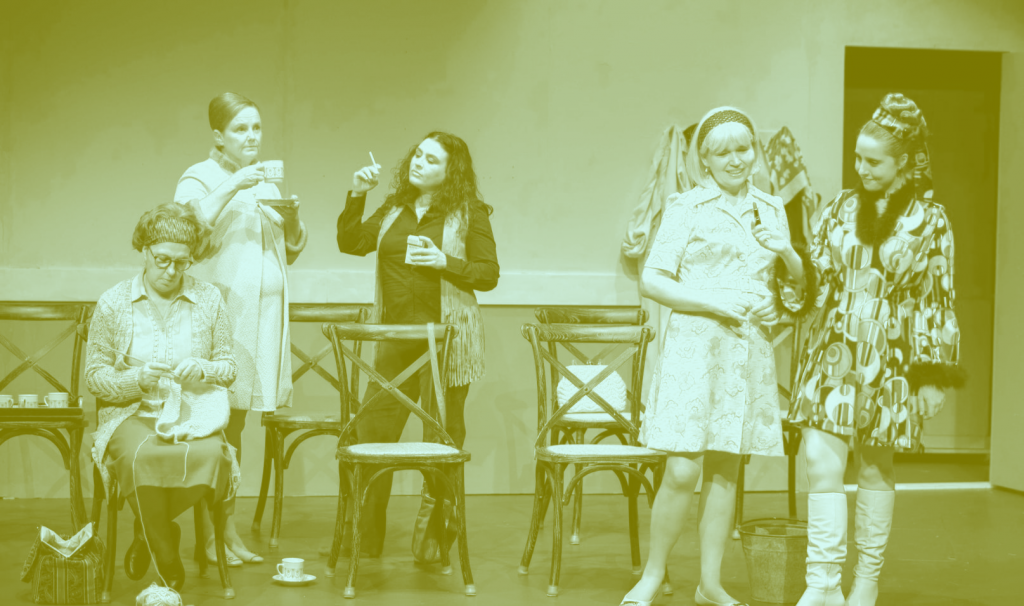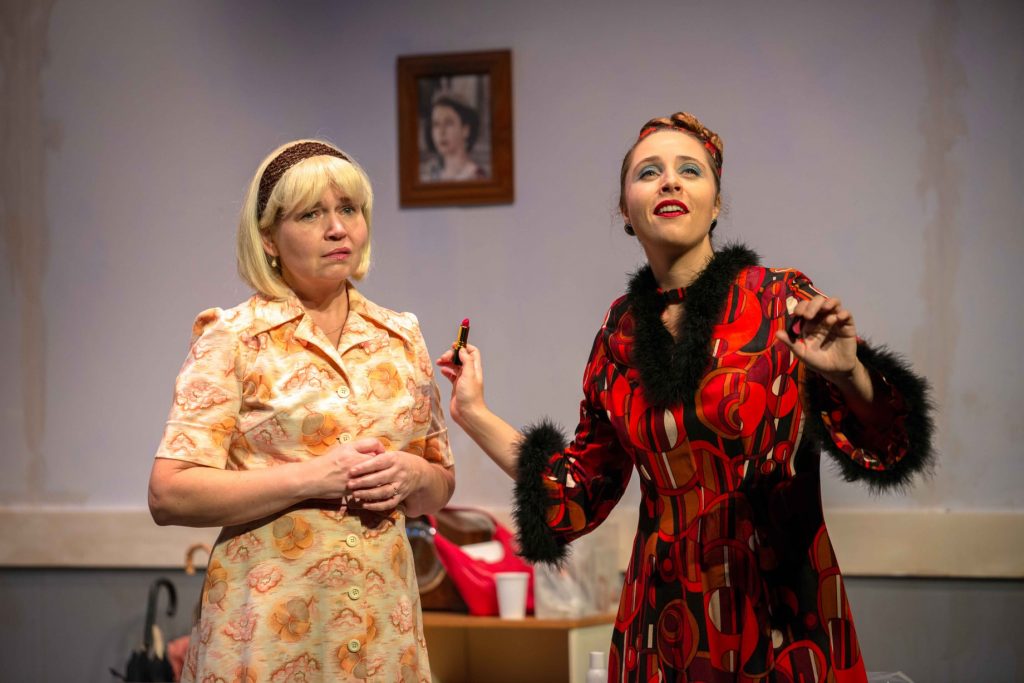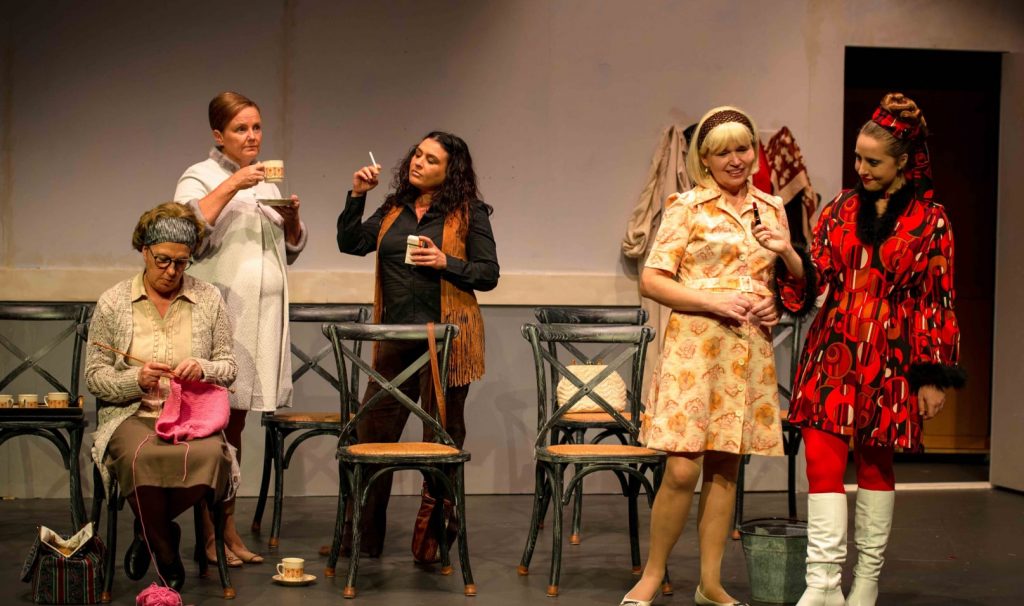
The Revlon Girl // Lind Lane Theatre Inc
‘The Revlon Girl’ was heart-wrenching.
With audible tears in the audience, even before performers took to the stage, Lind Lane Theatre Inc have presented a tearjerking Australian community theatre premiere of ‘The Revlon Girl’. As a company, this production, its cast and creatives honoured the victims and those that remained following the devastating events of the Aberfan mine disaster.
Fans of ‘The Crown’ will be no stranger to the tale of Aberfan, Wales, and the sadness that befell the town in October 1966. Due to the failure of authorities to implement any valuable safety measures, a pile of coal mine waste developed into a landslide and buried some 144 people.
Most tragically, this included 116 children from the local school. ‘The Revlon Girl’ follows the story of four mothers in their grief and reflection, some eight months after. First presented to commemorate the 50th anniversary of the disaster, ‘The Revlon Girl’ is an important historically inspired piece, particularly for those from Wales.
The show opened with the sounds of children’s laughter, a sweet song and then the sound of rumbling. Images were projected of the small coffins lining the burial grounds, and the audience wept. These tech choices, by Glenda Campi and Josh Wilson, set the tone for the piece – a deeply moving and commemorative one.
A simple stagnant set, by Colin Grevett and Drew Campi, included two bleak walls at an acute angle, some basic chairs and tables, and a hanging light – all of which gave the room a sense of realism with interesting dimensions. Details such as the Queen’s portrait and encroaching mold in the corners of the room gave the space the 1960s pub feel that was required of the setting.
Lighting and sound, designed by Josh Wilson and Glenda Campi, included a simple white wash that came mostly from above – and cast shadows upon performer’s faces – and the occasional rain sound effect matched with water drops from the ceiling. These elements combined formed several layers of symbolism. The shadows cast by the harsh light furthered the theme of realism, but also highlighted the dark circles on the eyes of the grieving women; the dripping water and rain reflected their hurt and tears; and while the storm outside was symbolic of their outburst and sobbing, the steady leak may have suggested a timeless grief, one which was slow but filled with constant sadness.
Costume designs by Glenda Campi, Judy Friend and Di Aitken were accurate and not forced. Some groups, when tasked with a period piece of recent decades, will reach for stereotypes and cliches, however, this team of costumers chose pieces that suited the unique characters and simultaneously were relevant to the 1960s. Revlon’s dress was vibrant and bold, creating a contrast with slightly more muted tones and frumpier outfits worn by the four mothers.
Director Glenda Campi’s signature aesthetic incorporates layers of dimension into the blocking, the set and the overall use of space. A door right of centre created the illusion of a hallway, and strategic blocking and dialogue delivery made the building seem far larger than it was. A series of chairs were lined up in an audience style on stage. These were used to create levels and never felt forced. Act Two included many monologues, and at times there was an over utilisation of forward-facing and fourth-wall-breaking positioning. Act One was far smoother in this regard, with characters interacting physically more often and realistically.
An all-female cast included Naomi Clasohm as Sian, Riette de Jager as Revlon, Kathryn Barnes as Marilyn, Christine Lynn as Rona and Robyn Hungerford as Jean. The four mothers were exceptionally thoughtful in their portrayal of grieving parents, and their Welsh accents were quite tight.
Clasohm maintained infectious upbeat energy throughout the piece, reflective of her character’s personality. This may also have been a choice to show the character of Sian using her positivity as a coverup for her grief, which was less explored in the script than that of the other mothers. De Jager was equally bubbly and bright.
Barnes was a standout in her delivery of a woman torn apart. She gave her lines an important light and shade, with moments of silence and inner turmoil contrasting bursts of outrage and distress. Similarly, Lynn was expressive of her character’s rage but allowed Rona’s cynicism and boisterousness to still shine through.
Hungerford was skillful in her ability to make the audience both empathise and dislike her character. While not an antagonist in the typical sense, the character Jean often played devil’s advocate and expressed polarising views about the disaster. Hungerford afforded her character the grace needed and gave her lines intention, which ensured she didn’t become a one-dimensional villain.
A deeply justified performance that paid tribute to the lives lost in a senseless tragedy. Campi, and Nambour’s Lind Lane Theatre, remain a gem of the arts community on the Sunshine Coast, producing quality entertainment with performers of exceptional skill and dedication to their crafts. ‘The Revlon Girl’ was a heartwrenching exploration of grief and a real-world tragedy that ought to be remembered.
‘The Revlon Girl’ performs until April 30, 2022 at The Lind, Nambour. For more information visit Lind Lane Theatre Inc’s website.








